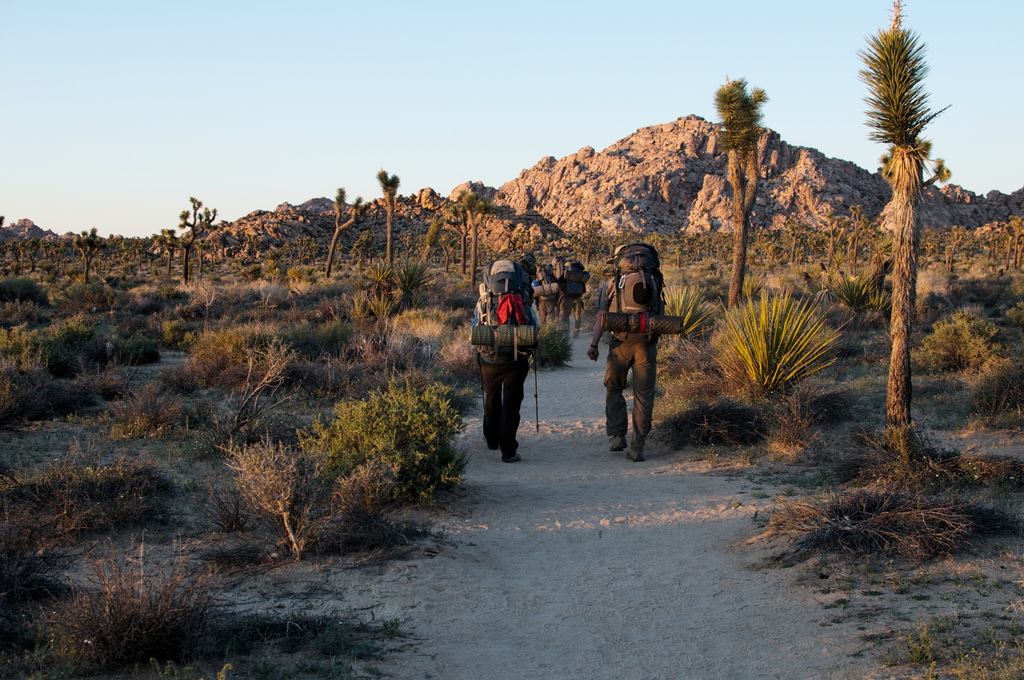
As the sun rises and sets, the long shadows make the desert come alive. Photo by Rikki Dunn.
For westward travelers and desert newcomers alike, arriving at Joshua Tree National Park can feel like landing on a different planet. After an easy flight and short drive from the Palm Springs airport, students often feel that they’ve stepped into alien territory as they walk among bizarre, spiky trees and piles of exposed granite monoliths. And yet, according to Outward Bound California Program Director Graham Ottley, this harsh, Dr. Seuss-looking course area actually seems tailor-made for students. Few other course areas allow for such immediate entrance into the field, and quick access to the park means students can jump into their adventure right away. Plus, the park’s unique rock formations and surreal desert scenery naturally encourage students to scramble, explore, learn and play. Best of all, Ottley explains, when they embark on a Joshua Tree Backpacking Expedition during Spring Break, students get to experience a once-in-a-lifetime opportunity: desert in the springtime.
It perhaps goes without saying that during his tenure with Outward Bound California, Ottley has seen some amazing things in the Joshua Tree desert. However, he did share just a few of his very favorite Joshua Tree Backpacking experiences, below.
Learn survival skills from the masters of efficiency
Springtime temperatures can rise into the 80’s in the daylight, then plummet into the 40’s after sundown. The vegetation is spare and efficient – reaching toward the sun in sharp spikes as it struggles to preserve its most precious natural resource – water. The animals, too, are experts in efficiency; many enter an inactive state of hibernation to preserve energy until spring rains replenish water stores.
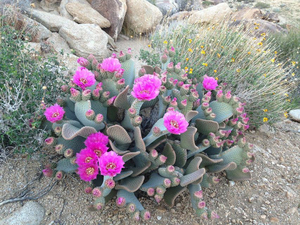
A Beavertail Cactii adds flashes of color in the desert palate. Photo by Graham Ottley.
Marvel at desert wildflowers
After a long, dry, cold winter, flora and fauna rejoice at the influx of water provided by much-anticipated spring rains. In a spectacular show of colors and textures, the desert transforms from dry and barren to lush and bright. In March, the wildflowers begin to bloom in Joshua Tree National Park. Desert fiddlehead, western tansy mustard, desert dandelion and desert marigold paint the land in playful sprays of yellow. Beavertail cactus pokes out bright pink blooms. Ocotillo explodes with red. Steve’s pincushion, whitedaisy tidytips and tufted evening primrose lighten the palette with pure, snowy white petals.
Watch wild things awaken
During the springtime, the animals begin to stir. The round-tailed squirrel rouses himself from a cold-induced hibernation. Reptiles and small desert mammals emerge from their burrows. The excitement quivers through the desert air – in the form of scurrying rodents, sunbathing snakes, flitting birds, basking lizards and grazing bighorn sheep.
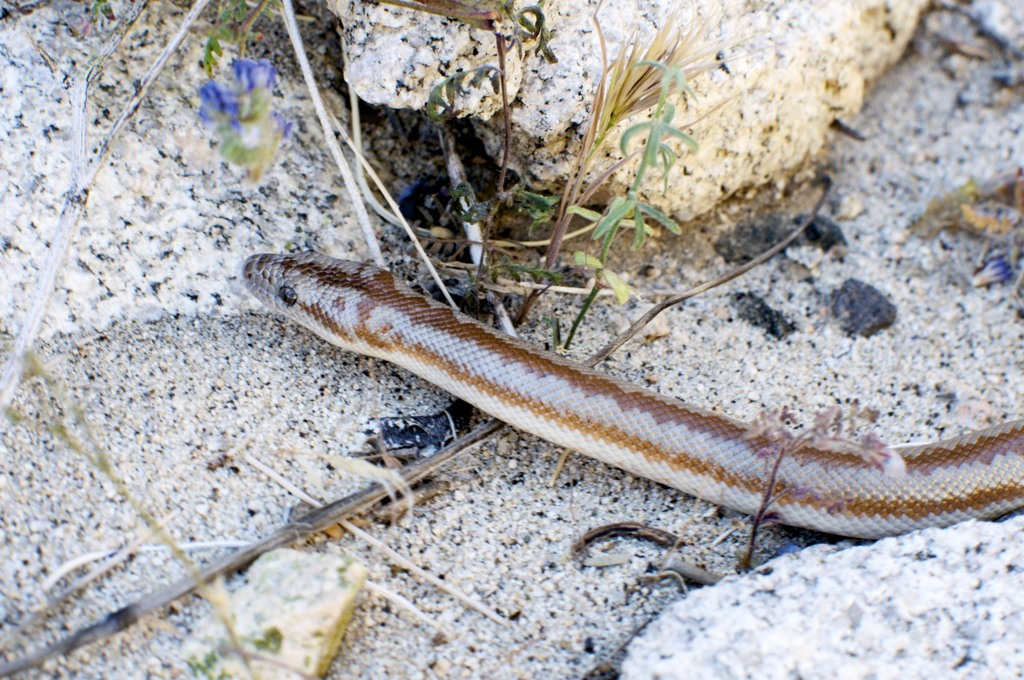
Sharing the space with creatures of all colors and shapes is part of the beauty of Joshua Tree courses. Photo by Rikki Dunn.
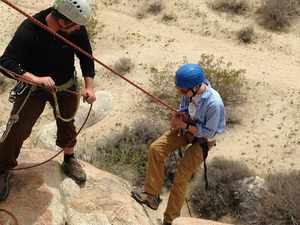
Course Director, Ian Ross, coaches a student while they take on the challenge of rappelling. Photo by Graham Ottley.
Learn how to climb
The rock formations in the National Park, shaped by centuries of tectonic and erosional forces, are ideal for aspiring climbers and students. On courses that include rock-climbing, Outward Bound students spend several days learning the technical aspects of climbing, including belaying, rappelling, climbing commands and safety considerations. The rocks’ physical geography encourages natural learning as students move on and off jutting granite monoliths, washes, playas, alluvial fans and bajadas.
Be king or queen of the mountain
After they’ve acquired and mastered the skills they need to navigate the desert, students tackle a peak ascent – meaning they literally conquer a mountain. Although several peaks stand tall in the Joshua Tree landscape, Ryan Mountain is a likely candidate. There’s nothing quite like the thrill of standing at the top and surveying the landscape below. A symbol of pride, accomplishment, and overcoming challenge, the peak ascent also makes for outstanding photos to share back home.
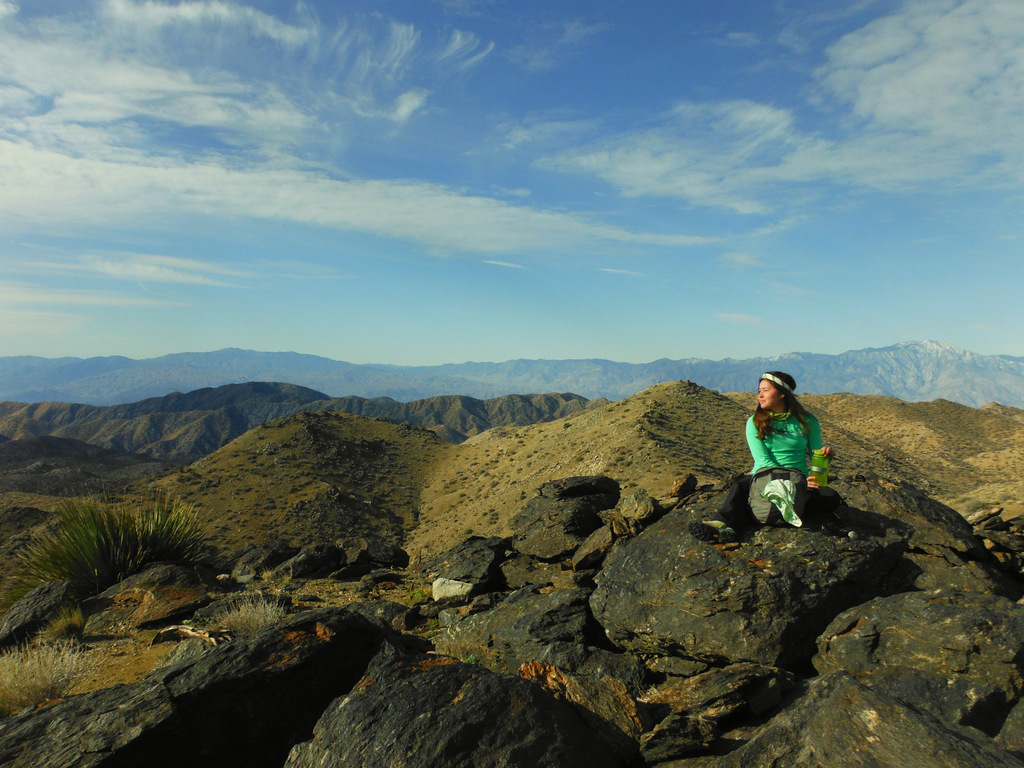
Water breaks are a great opportunity for reflection. Photo by Rikki Dunn.
Do yoga on a granite dome
Though students spend most of their time on the move through the fragile desert ecosystem (transporting equipment – and themselves – for miles each day), instructors also make time for rest and reflection. Students will have structured sessions for journaling and discussion, and even a little stretching. Doing yoga on a granite dome that has been baked by Mojave desert sun burns a lasting memory into most students’ consciousness.
Listen to coyotes howl at sunset
While your friends fell asleep to the sound of pumping club music in Panama City Beach, you dozed off to the lullaby of howling wild creatures. Can we even compare the two?
Be a part of a team
Navigating through desert terrain is tough. And rewarding. And beautiful. The desert presents a unique challenge of water scarcity. There are only five fan palm oases where water occurs naturally at or near the surface in the Park – and as you work together to coordinate your route with desert water caches, you’ll learn to appreciate each other – and the world around you.
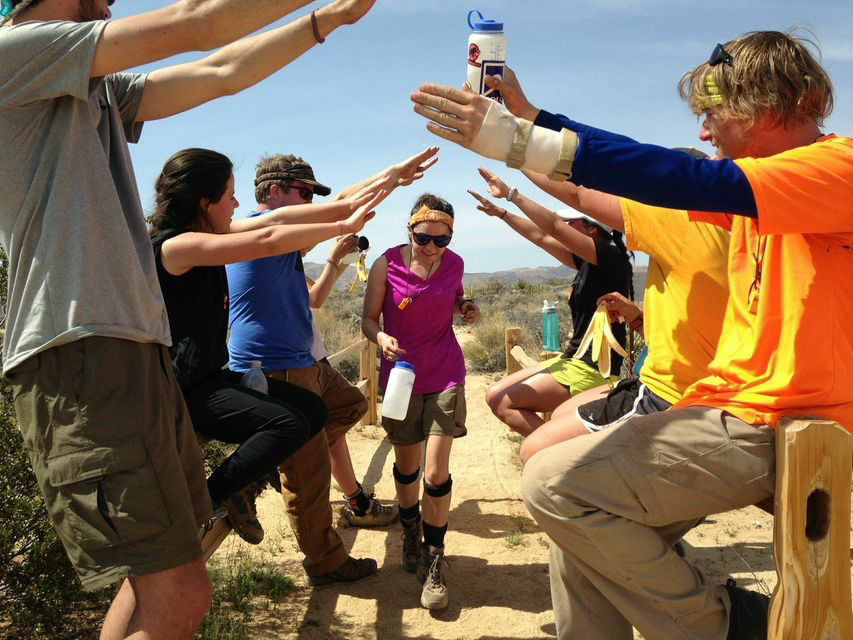
The finish of a PCE (personal challenge event). Photo by Graham Ottley.

High fives are free! Support is given by Instructors and crew mates alike. Photo by Rikki Dunn.
Carry your world on your back
Ever wondered what it would feel like to be a nomad? This is your chance. Instructors will show you the most efficient, most comfortable way to stow the week’s provisions into your pack along with your personal items, and then you’ll set off into the sunset with your world on your back. Backpacking trips are the very definition of “footloose and fancy-free.” You’ll be amazed at how far you can go and how much you can carry – and you’ll love the feeling of total self-sufficiency. Now, make like a turtle – and carry your home with you.
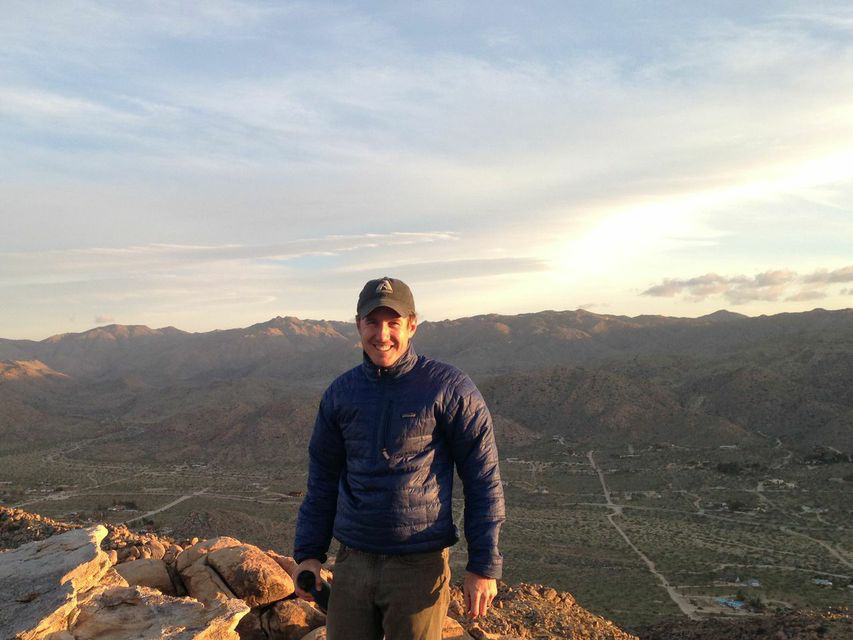
Graham atop Turtle Mountain. Photo by Graham Ottley.
The desert waits – but the springtime does not. Choose to spend Spring Break this year in the company of wildflowers and sunshine as the desert landscape awakens. Sign up for our Joshua Tree Backpacking Course – or choose from a variety of other outstanding Spring Break expeditions – each designed according to proven experiential learning principles, and each with its own geographical wonders.
This year, make Spring Break matter. Enroll today.




